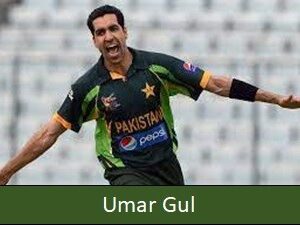Cricket like any other sport has its share of injuries. From minor injuries to major ones, injuries play a vital part in a player’s longevity in the game. Some of these injuries turn out to become career-threatening ones.
Cricket has become an extremely physical game and the regimes of the game have made cricketers prone to injuries
This article discusses the worst injuries in cricket that halted promising careers in the game.
Introduction
Cricket in the past was known for its slow leisurely approach similar to the game of golf. Only the 5-day Test  Cricket format was played. The game was played with an additional rest day in between for players to recoup from the long hours of play.
Cricket format was played. The game was played with an additional rest day in between for players to recoup from the long hours of play.
With the evolution of the sport, cricket skills improved, and new formats were introduced to make the game more visually appealing for the spectators. This led to the game becoming faster and physically more demanding.
Cricket is now played in three formats and these formats keep the cricketer busy throughout the year. Franchise cricket played in the T20 format is an extremely popular format that also is accommodated in the cricketer’s calendar. This overdose of cricket makes the cricketer vulnerable to constant injuries.
Injuries have always been part of the sport and the frequency of the occurrence now has become more.
While some injuries have allowed the cricketers to heal and make a re-entry into the game, some injuries turn out to be career-affecting ones.
Simon Jones
 Simon Jones was at his peak in the 2005 Ashes win for England. The fast bowler’s contribution to the England Ashes win can be put in the same league as the Botham’s Ashes. His achievements in the 2005 series were similar to Bothams’s past achievements who in more than one occasion, single-handedly won the game for his side.
Simon Jones was at his peak in the 2005 Ashes win for England. The fast bowler’s contribution to the England Ashes win can be put in the same league as the Botham’s Ashes. His achievements in the 2005 series were similar to Bothams’s past achievements who in more than one occasion, single-handedly won the game for his side.
18 wickets in 4 Tests, and being the second-highest wicket-taker in the 2005 series proved his importance to the team.
Simon Jones was unlucky with injuries throughout his career and injuries followed the player since his debut for the England side.
His knee injury resurfaced in the 4th Test and was forced out of the series for a long injury layoff for recovery.
In England’s 3-Test series tour to India, Simon Jones was to make his comeback after the 2005 Ashes Injury but unfortunately, he again injured himself during practice and had to fly back to England. He was again forced out of a Test Series due to Injury.
Simon never played for England again and the 2005 Ashes became his last competitive game for England.
Andrew Flintoff
 Andrew Flintoff was England’s biggest allrounder after Sir Ian Botham.
Andrew Flintoff was England’s biggest allrounder after Sir Ian Botham.
Andrew Flintoff was the best all-rounder in the England Side and his contribution with ball and bat was crucial for England’s Test Side and One Day Side.
His individual contribution was monumental in England winning the Ashes series in 2005 after 18 years. Andrew Flintoff was the leading wicket-taker with 24 wickets in the five Tests
He was vulnerable to frequent injuries throughout his career and he hardly managed a whole season without injuries making him miss crucial games.
He only could play 3 IPL games before pulling out from the cash-rich tournament due to injury.
He retired after the 2009 Ashes series. Many Cricket experts believed that Andrew Flintoff could break all records for England but injuries cut short his promising career. He retired prematurely at the age of 31.
Shane Bond
 Shane Bond was the fastest bowler for New Zealand. Shane Bond played for the black caps for 9 years but played only 18 tests for his country. To avoid further damage to his injuries he focussed on the shorter format of the game and played 82 One Day Internationals.
Shane Bond was the fastest bowler for New Zealand. Shane Bond played for the black caps for 9 years but played only 18 tests for his country. To avoid further damage to his injuries he focussed on the shorter format of the game and played 82 One Day Internationals.
He was on and off the team squad due to recurring injuries to the knee and back.
He still managed to take 234 wickets in Test and ODI proving his wicket-taking ability.
After a 2-year layoff due to injury, Shane made a comeback to competitive cricket only to unfortunately get injured again in the West Indies Series.
Mark Boucher
 Mark Boucher a veteran of 147 Test matches and 295 ODI games was one of the pillars of South African cricket.
Mark Boucher a veteran of 147 Test matches and 295 ODI games was one of the pillars of South African cricket.
While playing a practice game against Somerset during South Africa’s England tour, Boucher was struck on his left eye by a bail after the ball hit the stumps.
It was a freak eye injury that forced Boucher to take retirement from the game.
The wicket-keeper batsman served South African cricket for more than 15 years but had few more years to offer.
Nathan Bracken
 This tall lanky Southpaw was labelled as Australia’s next Bruce Reed. He formed the Trio Australian pace attack of Glenn Mac Grath and Brett Lee in the 2000s.
This tall lanky Southpaw was labelled as Australia’s next Bruce Reed. He formed the Trio Australian pace attack of Glenn Mac Grath and Brett Lee in the 2000s.
Known for his swing bowling, Nathan Bracken was an integral part of the dominant Aussie Side.
His brilliant bowling helped Australia win the 2006 Champions Trophy and the 2007 World Cup.
Prior to the 2009 Champions Trophy in South Africa, Bracken’s knee was injured which proved to be seriously grave and fatal for his international career.
Nathan Bracken announced his retirement in 2011 after a prolonged gap in play due to injury and failed attempts to make an international comeback.
Ryan Harris
 Ryan Harris was an Australian fast bowler known for his astute line and length bowling. He was a regular in the Australian bowling lineup in the 2010 -2015 period.
Ryan Harris was an Australian fast bowler known for his astute line and length bowling. He was a regular in the Australian bowling lineup in the 2010 -2015 period.
Blessed with pace and swing, his 22 wickets in the 2013-2014 Ashes series helped Australia to dominate the Ashes series for a long time.
A knee injury kept him out of the 2014 season and he was only able to make a comeback to the Australian Side in the India series for the Border-Gavaskar trophy. His Knee Injury kept recurring which kept him out again for the 2015 Ashes which proved to be too much for the pace bowler and he announced his retirement ending a promising career.
Umar Gul
 An Overnight sensation after taking 6 for 96 against India in 2004, Umar Gul was considered the next big thing in Pakistan’s Fast bowling.
An Overnight sensation after taking 6 for 96 against India in 2004, Umar Gul was considered the next big thing in Pakistan’s Fast bowling.
Gul played 47 Test matches and took 163 wickets. In ODI, he took 179 wickets in 130 ODIs.
Umar Gul was most lethal in the T20I format and was rated as one of the most lethal exponents of fast bowling, especially in the death overs.
His 5-6 against New Zealand in 2009 remain the best bowling figures by a fast bowler in the format.
Gul suffered a career-threatening knee injury in 2013 and never recovered. He was forced to take early retirement at the age of 31
Nari Contractor
 Indian Captain Nari Contractor was hit by a bouncer by Charlie Griffith during a tour match in Barbados.
Indian Captain Nari Contractor was hit by a bouncer by Charlie Griffith during a tour match in Barbados.
The nasty injury meant a plate had to be inserted to treat his fractured skull.
Nari Contractor’s career was cruelly cut short due to the injury. He only played 31 Test matches for his country.
Jonathan Trott
 One of the first players to take retirement due to mental health
One of the first players to take retirement due to mental health
Jonathan Trott was a technically sound player and an integral part of the England side. The pressures of the game brought a lot of anxiety and unmanaged stress. These issues started affecting the stylish top-order player.
Trott left England’s Ashes tour of Australia in November 2013, with the intention of taking a break from all forms of cricket. A comeback attempt in April 2014 was shelved due to a recurrence of the condition. His poor performance during the losing West Indies Series triggered his decision to retire as the pressure of the game was taking a toll on the player.
Jonathan Trott played for England in 52 Test and 68 ODIs. The 2015 ICC Cricketer of the year awardee retired at a very young age.
Craig Kieswetter:
 Craig Kieswetter also had to force a retirement due to an eye injury. Craig played an important role in England’s 2010 ICC World T20 triumph
Craig Kieswetter also had to force a retirement due to an eye injury. Craig played an important role in England’s 2010 ICC World T20 triumph
Like Boucher who had a similar injury, Craig Keiswetter a former English wicket-keeper retired from the game at the age of 27. Kieswetter decided to do so due to an eye injury he suffered while batting for county side Somerset on the domestic circuit.
After multiple failed attempts to make a comeback, he struggled to pick up deliveries as he would inaccurately judge the line and length.
Conclusion
The majority of injuries sustained to the hands and wrists of a cricketer are impact injuries causing fractures, dislocations, and sprains. Wicketkeepers are particularly prone to hand injuries. Injuries to the fingers are the most common regarding the hand.
While these injuries are managed and nursed well, certain injuries derail the cricketer’s career for a longer period.
India is currently struggling with their ace bowler Jasprit Bumrah who is missing out on his prime years due to injury. Similarly, Hardik Pandya is now become a limited-over player and has not taken part in any of the past 3 years Test matches
Injury will continue to be part of a cricketer’s journey and opting out from one format from the three may help in the longevity of the player.



Leave A Comment